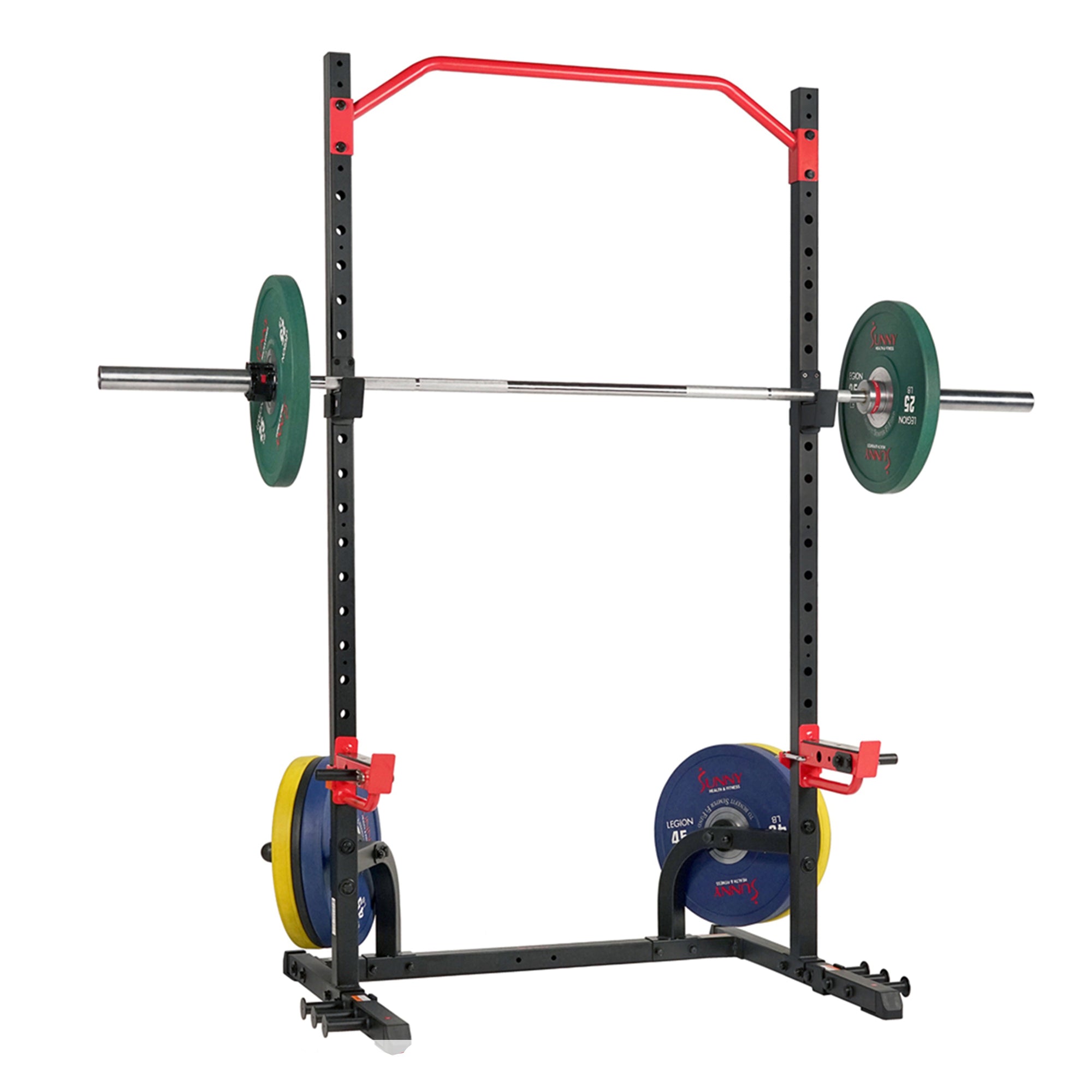How beneficial is training with resistance bands AND power racks for strength exercises? That might be a question you’ve asked yourself when encountering someone at the gym on a power rack, bench pressing with a plethora of weighted plates, along with a resistance band wrapped around each end of the barbell. Is there a name for this strong technique, and what are some strength exercises I can do while utilizing this technique?
What is Variable Resistance Training (VRT)?
What is Variable Resistance Training (VRT)? Variable Resistance Training (VRT) is strength training that applies a dynamic degree of force to the target muscle(s). With this training, the staff or resistance changes through the entire range of motion. Dumbbells and barbells bar provide static resistance, while weightlifting chains and resistance bands deliver variable resistance. Variable resistance performs best when heavy resistance bands create the force.
Why is Variable Resistance Beneficial?
With variable resistance, the weight changes as we move, putting less force on joints where less muscle is engaged and more staff where more power is engaged. VRT requires minimal energy at the bottom of a movement, an average amount of force in the middle, and an incredibly high amount of power at the top. This exercise method will allow you to maximize muscular involvement by altering resistance at different points in a movement and will help vary the resistance by our varying strength capacities.
Safety Precautions
When using a resistance band with a barbell, there are a few safety precautions that you should take into consideration. It’s essential to make a gradual progression to using a resistance band with a barbell and that you start with the appropriate resistance. Another essential safety precaution is to ensure that the spotter arms with the safety latches are locked into the rack. Find someone willing to be another spotter for you if you still don’t feel comfortable with just the spotter’s arms. Safety should always be your number one priority when working out and doing any exercise.
5 Exercises To Do While Using a Resistance Band & Barbell On a Squat Rack
In this next section, I will be going over my top 5 exercises you can do with a resistance band & barbell while being on a squat rack. It’s essential to make sure that you slowly progress to using a resistance band with a barbell. You start with an appropriate size resistance band and consider all safety precautions when performing these moves.
Variable Resistance Squat:

- Attach resistance bands to resistant band posts on each side of the squat rack. (if to much slack, double tie it)
- Make sure the squat rack is anchored down with weighted plates.
- Place J-Hooks in a comfortable and appropriate placement according to your height.
- Make sure the spotter arm with safety laches is locked.
- Place the resistance band on each side of the barbell
- Use a spotter and confirm that they are in position and ready to spot.
- Squat down, making sure your chest is up, your back is flat, and your hips are down and back, driving up through your heels. (DO NOT lock out knees)
Variable Resistance Bench Press:

- Place a flat bench in the middle of the squat rack.
- Attach spotter arm with safety lock latch
- Place J-Hooks inappropriate placement
- Attach resistance bands to resistant band posts. (if to much slack, double tie it)
- Place a resistance band on each side of the barbell.
- Make sure the squat rack is anchored down with weighted plates.
- Use a spotter and confirm that they are in position and ready to spot.
- Lift the bar up and off J-Hooks, lower the bar down to the chest, and drive your palms up into the ceiling. (DO NOT lock out elbows)
Variable Resistance Shrugs:

- Double-tie resistance bands to resistant band post.
- Place J-Hooks inappropriate placement
- Attach the Spotter arm with a safety lock latch.
- Place a resistance band on each side of the barbell.
- Make sure the squat rack is anchored down with weighted plates.
- Lift the bar up and off the J-Hooks; while keeping your arms straight, shrug your shoulders up to your ears and slowly lower.
Variable Resistance Reverse Row:
- Tie a resistance band to the bottom front of the squat rack.
- Place the other end of the resistance band around the middle of the barbell.
- Make sure that the squat rack is anchored down with weighted plates.
- Grab onto the barbell with your palms facing up towards the ceiling
- Pull the bar up towards your sternum.
- Pinch shoulder blades when the bar is at your chest, and slowly lower.
Variable Resistance Romanian Dead Lift:

- Tie a resistance band to the bottom front of the squat rack.
- Place the other end of the resistance band around the middle of the barbell.
- Make sure the Squat Rack is anchored down with weighted plates.
- Grab onto the barbell with your palms facing down, keeping your arms straight.
The Proof
In seven studies involving 235 subjects, variable resistance training led to significantly more significant mean strength gain than the recorded response to conventional weight training. (1) The study also showed that long-term VRT training using elastic bands attached to a barbell emerged as an effective evidence-based method for improving maximal strength in athletes with different sports backgrounds and untrained subjects. In addition, variable resistance training improves resistance to fatigue through the physiologic response to an acute effect of fatigue during training. (1) Besides increasing velocity, it increases the deviant stimulus of training and, thus, the strength needed to slow down or stop the load at the end of the eccentric phase, including more excellent myoelectric activity in the muscles. (1)
Final Thoughts…
Variable resistance training with elastic bands offers little resistance, but as you push through the concentric part of your exercise, the resistance progressively gets greater. Increasing your target muscle’s time under progressive resistance offered by the bands will force you to push hard through each rep, leading to enhanced power development. I do not recommend starting with variable resistance if you are new to weightlifting. If you’re an experienced weightlifter and feel like you’ve plateaued in your strength & muscle development, I highly recommend you give elastic band variable resistance training.
(1) Effects of Variable Resistance Training on Maximal Strength: A Meta-Analysis, Journal, 2018. https://pubmed.ncbi.nlm.nih.gov/25968227/ Accessed 6 May, 2022

























Add Your Name & Email
Please enter your name and email to continue.We won’t display your email publicly.